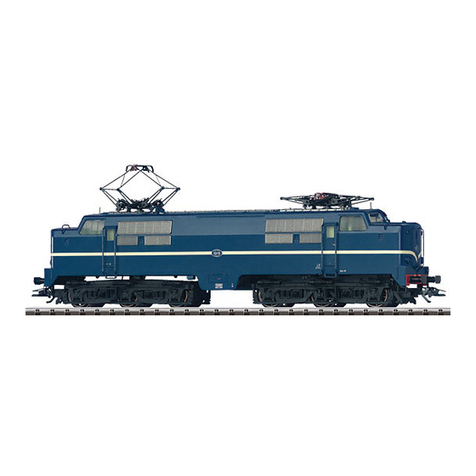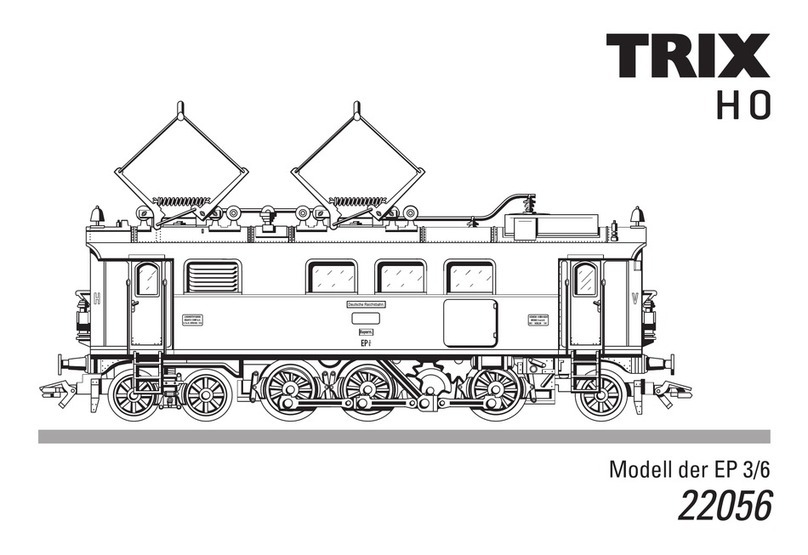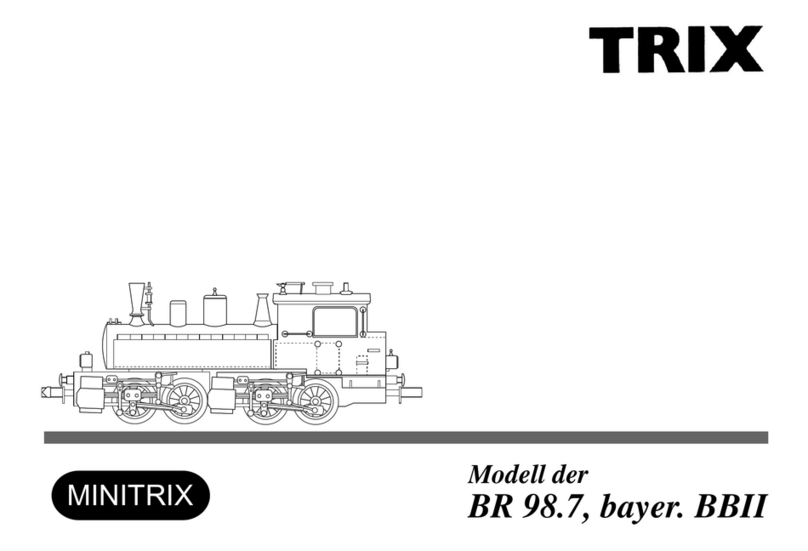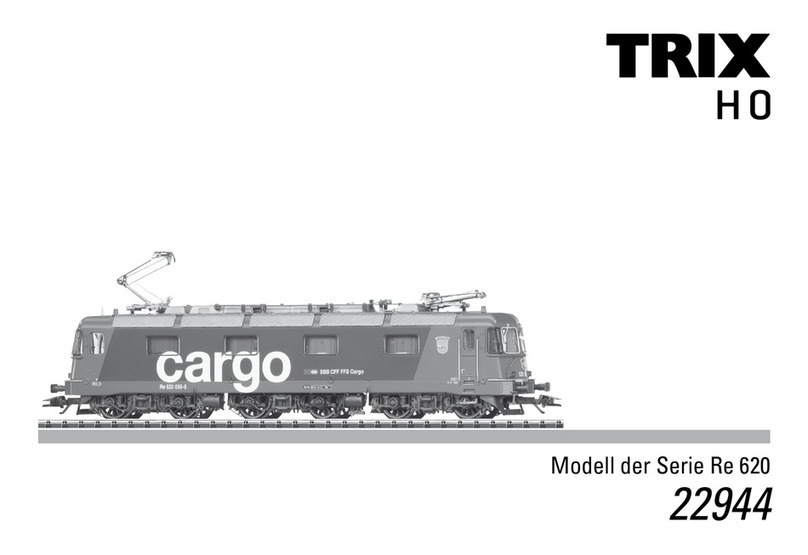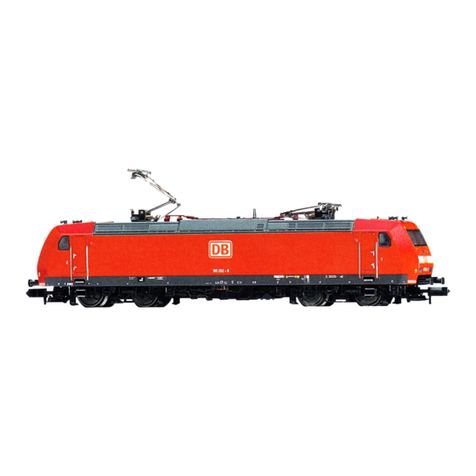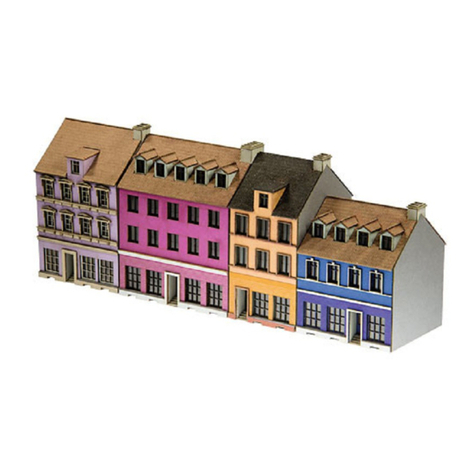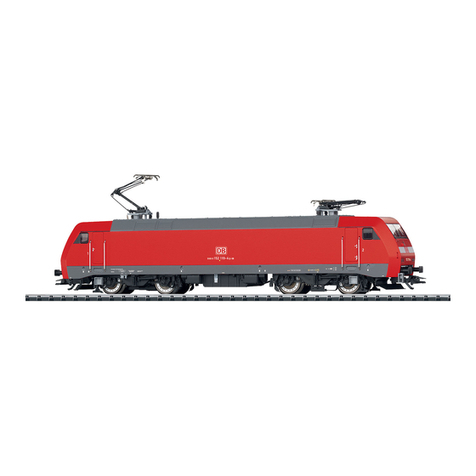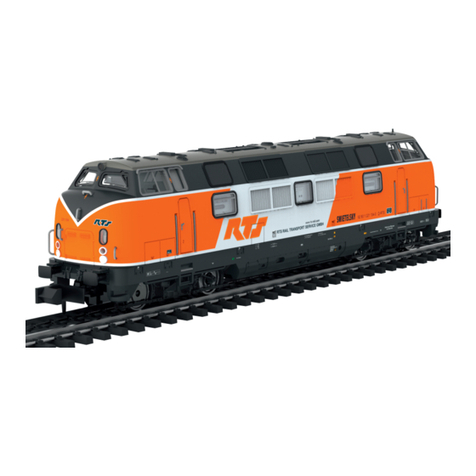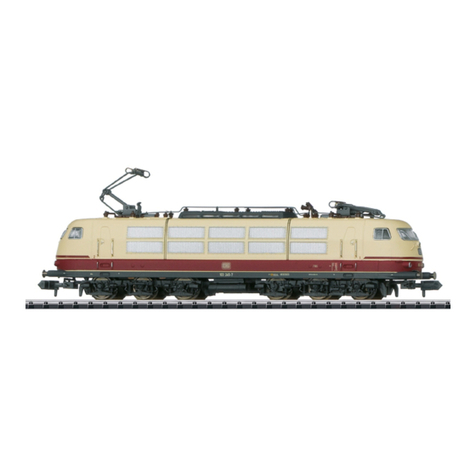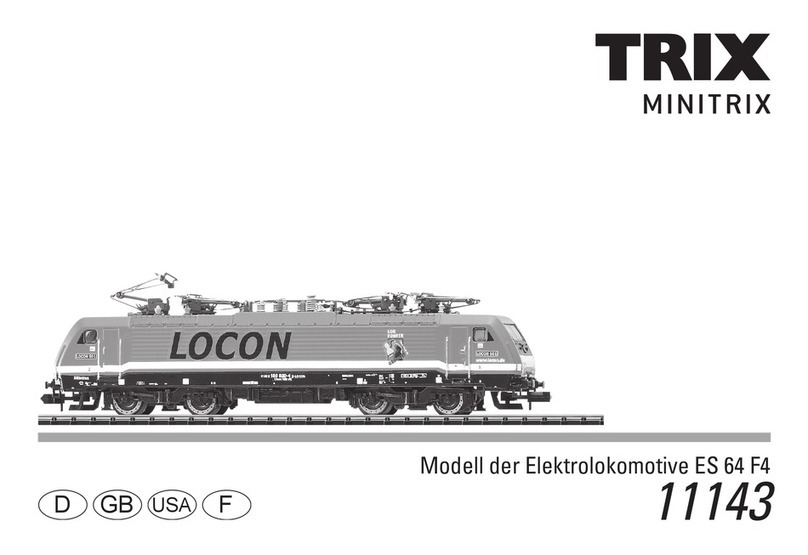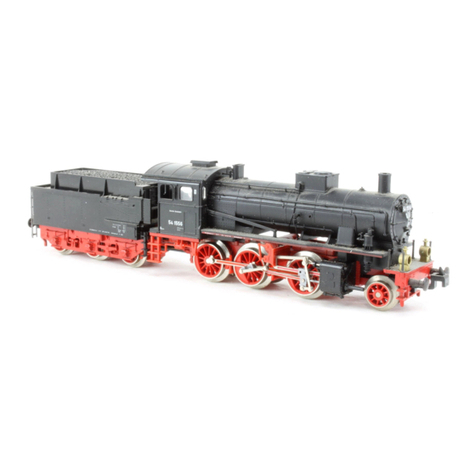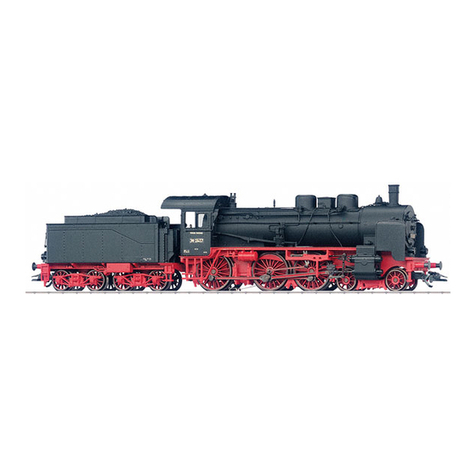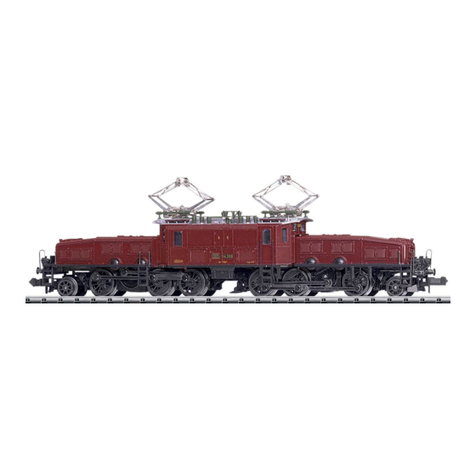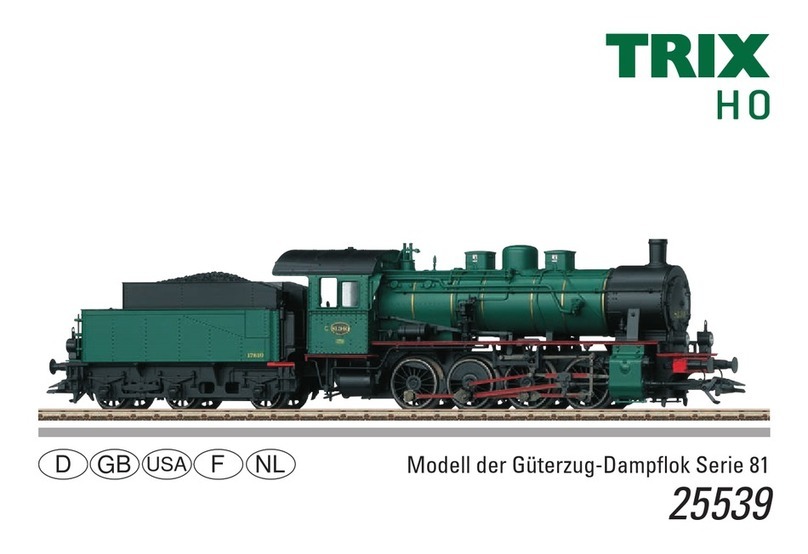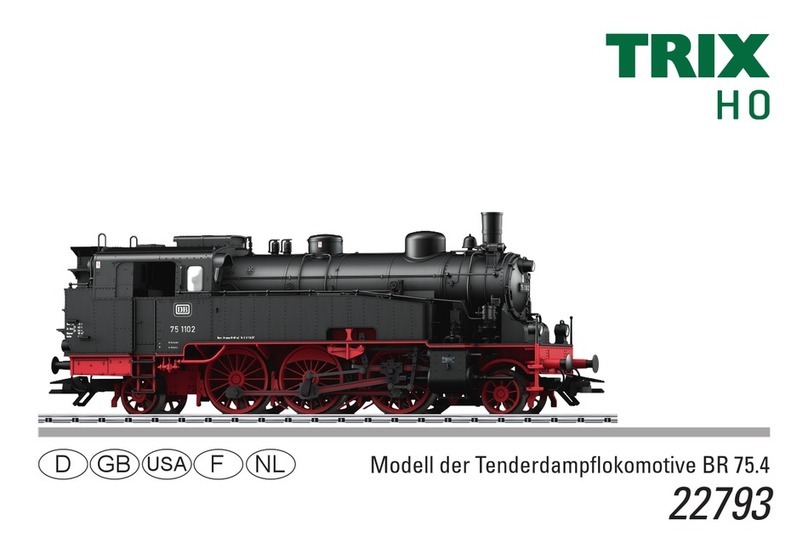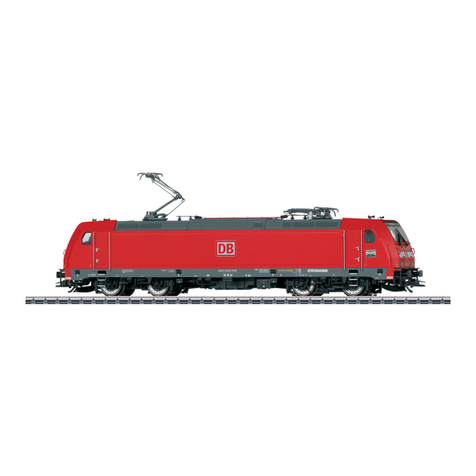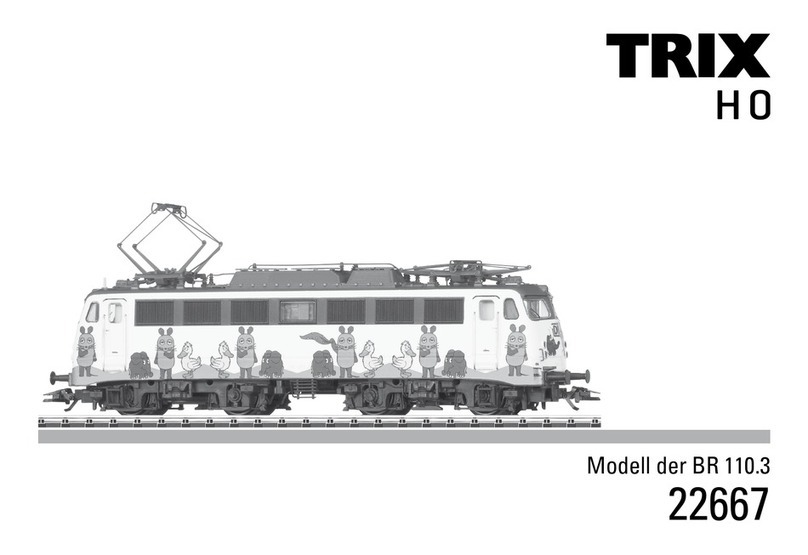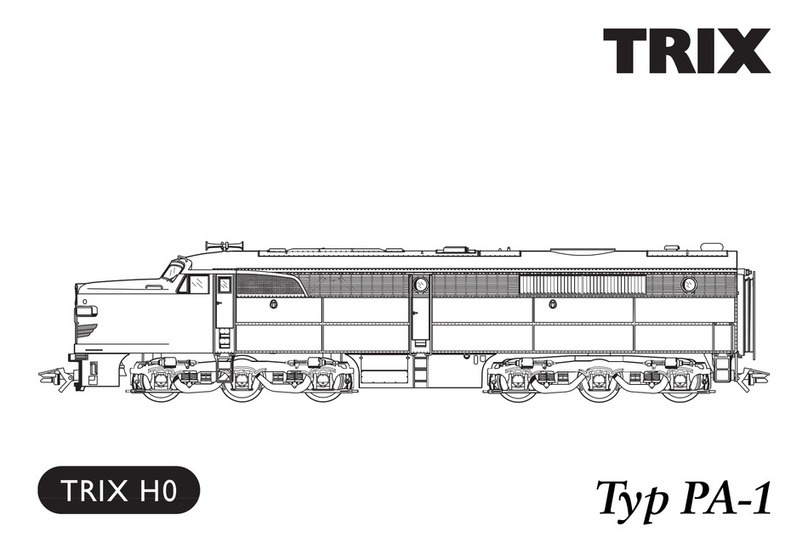9
Remarques concernant l’exploitation
• L’éclairage se désactive dans la section d’arrêt.
Remarques concernant le fonctionnement
avec courant continu
• Fonctions de conduite: en avant – arrêt – en arrière.
• Alternance de lumière.
•
Pour le fonctionnement, on a besoin d‘une tension con-
tinue égalisée. C‘est la raison pour laquelle les systèmes
fonctionnant avec une commande de durée d‘impulsions
ne conviennent pas.
• Tension minimum: 7 – 8 Volt =.
Remarques concernant le système multitrains DCC
• Adresse réglée au départ usine: 03.
• Conduite: marche avant – arrêt – marche arrière avec
régulation de charge.
• Crans de marche: 14 crans de marche préréglés en
mode DCC, 28 ou 120 crans de marche sont auto-
matiquement reconnus et réglés.
• Fonction:
– F0/fonction éclairage: allumer/éteindre
– F2: Désactivation de la temporisation
d’accélération et de freinage définie
– F3: Bruitage d’un avertisseur sonore
•
Les défaillances au niveau du fonctionnement, découlant de
la modification des réglages faits en usine sur le système
électronique de la locomotive, sont déclenchées par
l‘opérateur et ne constituent par conséquent aucune raison
de réclamation; elles ne donnent de ce fait aucun droit de
recours en garantie contractuelle ou commerciale.
•
Le système électronique monté sur la locomotive offre
une multitude de possibilités de réglage conformément
à la norme NMRA/DCC. Une série de paramètres est
pour cela mémorisée dans ce que l‘on appelle des CV
(abréviation pour «Configuration Variables» = variables
de configuration). Pour ce qui est de la procédure
de modification de ces valeurs de réglage, voir les
instructions de service du système d‘exploitation utilisé.
Ce système d‘exploitation doit respecter les normes
NMRA/DCC pour pouvoir garantir une fonction de
programmation irréprochable. L‘utilisation d‘un système
d‘exploitation non approprié ne constitue aucune raison
de réclamation et ne donne aucun droit de recours en
garantie contractuelle ou commerciale.
•
C‘est la raison pour laquelle nous recommandons de ne
modifier qu‘une seule valeur de réglage et d‘en vérifier
les répercussions par la suite.
• La CV 8 constitue une variable de configuration im-
portante, car le fait d‘inscrire la valeur «8» ramène le
module complet à l‘état initialement réglé au départ
usine, avant sa livraison.
